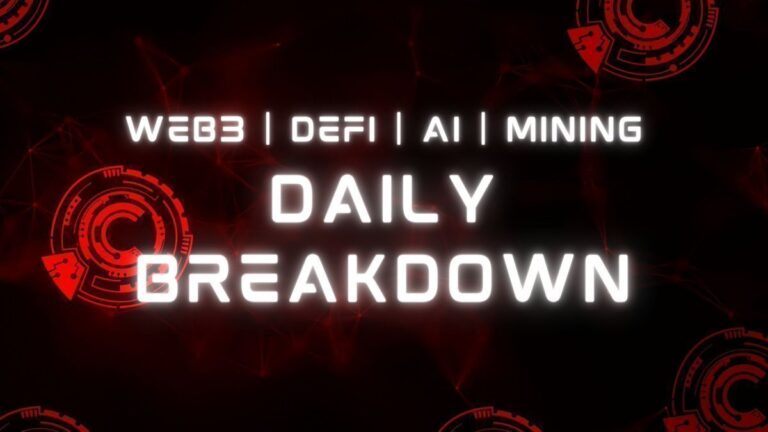
TL;DR: Passive crypto mining allows you to earn income from cryptocurrencies like Bitcoin without actively participating in the mining process. Strategies like cloud mining, staking, and yield farming enable earning returns by leveraging your crypto assets. However, risks exist so conduct thorough research before investing. Ultimately, passive crypto mining opens doors to generate wealth aligned with libertarian ideals of financial freedom.
Earning a steady stream of income from your crypto without having to actively mine coins sounds appealing. But how does it all work? This guide walks through the best passive crypto mining strategies for 2023 so you can maximize returns from your digital assets.
Why Choose Passive Crypto Mining?
Passive crypto mining provides a hands-off approach to earn income from cryptocurrencies. It delivers advantages over active mining like:
- Steady revenue stream — Earn returns consistently without continual effort.
- Lower barriers to entry — Requires less technical expertise and expensive equipment than mining coins directly.
- Diversified options — Ability to earn income from leading coins like Bitcoin as well as altcoins.
- Network rewards — Supporting crypto networks through activities like staking contributes to their growth.
- Potential upside — Increase in coin demand or price can boost income.
Passive mining opens doors for easily generating wealth from cryptocurrencies. Even small amounts invested can compound over time to build your crypto portfolio.
Methods for Passive Crypto Earnings
You can earn passive income from crypto through:
Mining Strategies
- Cloud Mining — Remotely mine coins using rented computer power and share profits.
- Mining Hosting — Own mining hardware but outsource maintenance to a hosting facility.
- Solo Mining — Independently mine with your own equipment and infrastructure.
- Pool Mining — Join a collective mining pool to increase chances of solving blocks.
- Staking — Earn rewards for holding coins to validate network transactions.
Non-Mining Strategies
- Lending — Lend your crypto to borrowers and earn interest.
- Liquidity Provision — Supply crypto liquidity to exchanges and get a share of fees.
- Crypto Faucets — Earn coins for completing microtasks like videos and surveys.
Each strategy has varying risks and rewards to evaluate.
Understanding Crypto Mining
Before diving into various passive mining techniques, it helps to understand some key concepts about how cryptocurrency mining works.
How It Works
Cryptocurrency mining involves using computing power to solve complex math problems and validate transaction data. Miners who successfully solve these problems are rewarded with coins like Bitcoin. The more computing power (hash rate), the greater the rewards.
Mineable Coins
In addition to Bitcoin, other mineable coins include Litecoin, Ethereum, Monero, and ZCash among others. Each has a unique mining algorithm and process.
Difference Between Mining and Staking
Mining requires expensive equipment and energy to verify transactions. Staking instead allows validating transactions by holding coins in a wallet to support the network security. It’s less resource-intensive than mining.
Hardware and Software Requirements
Specialized hardware like ASIC miners along with software like mining pool clients are essential for crypto mining. Staking instead relies on simply holding coins in a compatible wallet.
7 Best Passive Crypto Mining Strategies
Now let’s explore techniques to put your cryptocurrency to work to earn passive income.
1. Cloud Mining
With cloud mining, you pay a provider to remotely use their infrastructure to mine coins and share profits.
Pros: Easy entry, no equipment costs, immediate mining potential.
Cons: Reliability risks, lack of control, complex payout models.
Leading providers include Hashflare, Genesis Mining, IQ Mining. Do extensive research to find a reputable provider.
2. Hosted Mining
Hosted mining involves purchasing your own hardware but housing it in a facility that handles maintenance. You pay electricity and a monthly fee while mining rewards go to your crypto wallet.
More hands-on than cloud mining but still minimizes hassles of direct operation. Leading hosting providers include Compass and Blockware Solutions.
3. Solo Mining
As the name suggests, solo mining means setting up your own independent mining operation. This is a highly involved approach requiring investment in equipment and infrastructure. To be successful, low electricity costs and technical expertise are necessities.
Unless you have significant capital and mining know-how, solo mining may not be the most accessible option. Joining a mining pool can help smaller individual miners better compete.
4. Pool Mining
Mining pools allow miners to combine computing power and share block rewards. This levels the playing field and provides steadier payouts. Leading mining pools include F2Pool, Poolin, and ViaBTC.
When selecting a pool, factors like minimum payouts, fees, and reward distribution method should be evaluated.
5. Staking
Staking offers fairly easy passive income by holding coins in a wallet to participate in transaction validation on proof-of-stake networks. It can provide rewards upwards of 5–10% annually through network incentives. Leading staking networks include Ethereum, Solana, Cardano, and Polkadot among others.
Risks include technical barriers for beginners and market volatility. But staking barriers are lower than mining. No special hardware is needed.
6. Lending
Lending crypto to borrowers can produce interest earnings. Platforms like Aave and Compound automate matching lenders to borrowers using smart contracts. Interest rates can be as high as 5–10% but lending isn’t without risks. Be sure to evaluate factors like transparency, security, rates, and collateralization.
7. Liquidity Provision
Providing crypto liquidity to exchanges like Uniswap allows earning fees from trading activity. However, impermanent loss is a key risk if asset prices fluctuate heavily. Projects like Yearn Finance mitigate risks by automatically moving funds across opportunities.
Bonus: Crypto Faucets & Play-To-Earn
Crypto faucets distribute rewards for completing microtasks like watching videos. Earnings are small but provide a simple starting point. Play-to-earn games like Axie Infinity reward game progress with crypto assets.
Closing Thoughts
Passive crypto mining unlocks a hands-off approach to generating income from digital currency — a true paradigm shift that moves beyond outdated financial systems. While risks exist in new frontiers, the technology now enables anyone to leverage cryptocurrency to create value aligned with ideals of financial freedom and decentralization. This is just the beginning. As options expand, passive crypto mining will become an increasingly powerful tool for individuals to achieve financial sovereignty and security. The choice is ours to pave a new path.
Thank you for reading “Passive Crypto Mining: 7 Best Strategies to Earn Income (2023)“.
- Subscribe to our newsletter: ConsensusProtocol.org
- Follow us on Twitter: @ConsensusPro




